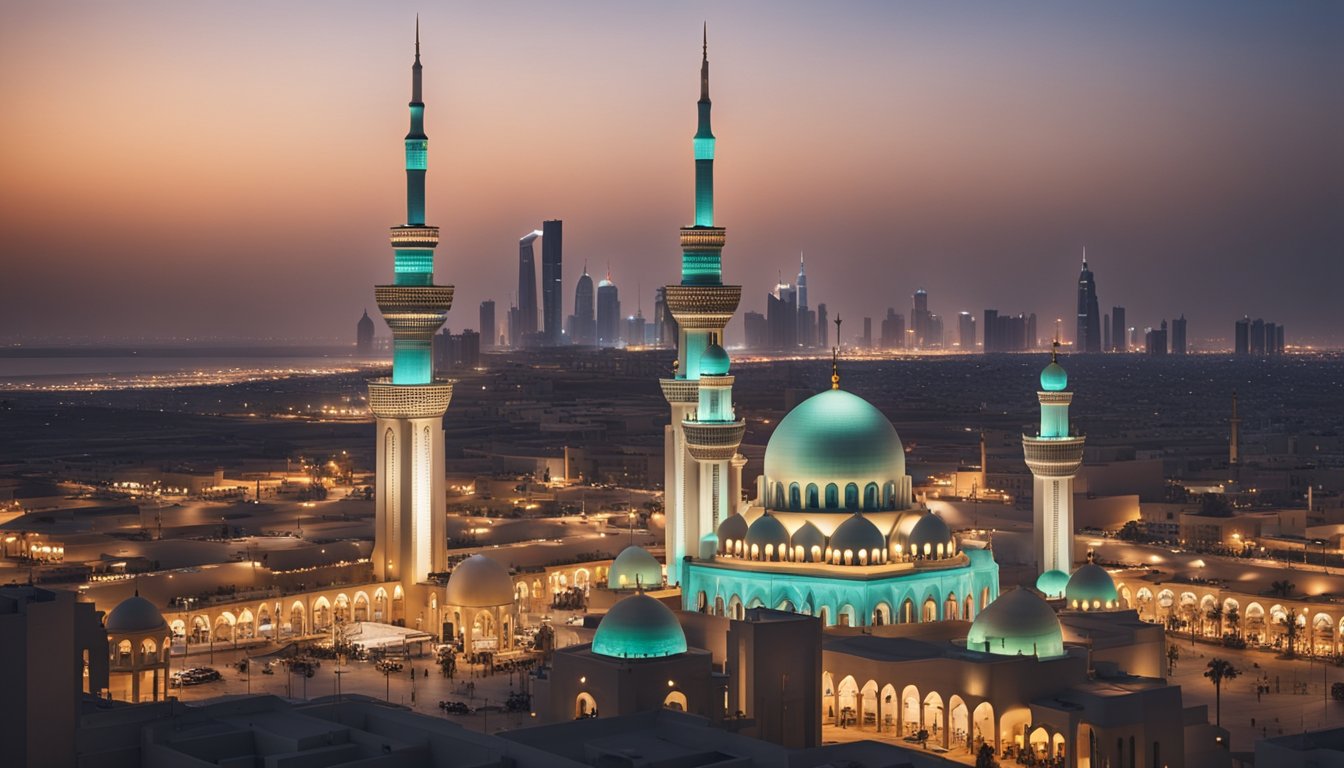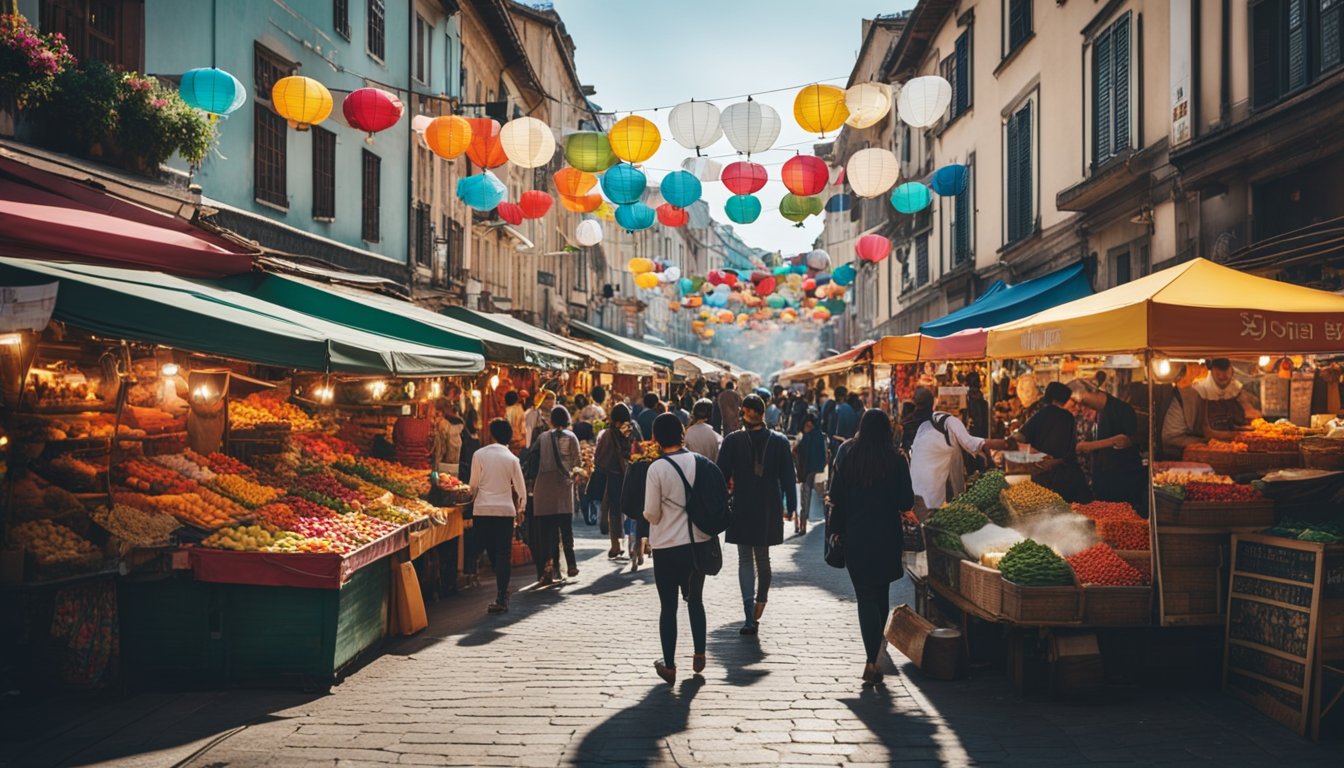Kuwait, a country positioned at the tip of the Persian Gulf, is a land of contrasts and cultural wealth that beckons travelers from around the globe. Known for its modern skyline set against the backdrop of the desert, Kuwait offers an intriguing blend of old-world charm and contemporary elegance. As visitors explore this nation, they encounter a tapestry of experiences, from bustling markets and grand mosques to tranquil beaches and museums that chronicle the region’s storied past.

Travelers to Kuwait will find a history steeped in maritime tradition and pearl diving, woven into the very fabric of its society. The Kuwait Towers, an emblematic trio of structures, stand as a testament to modern architectural prowess while echoing the country’s rapid economic growth. On the flip side, the old Souq Al-Mubarakiya market offers a glimpse into the heritage of Kuwait, with spice-scented lanes and artisans crafting traditional items, allowing visitors to immerse themselves in the local culture and customs.
The discovery of oil transformed Kuwait into a global player, yet it has carefully preserved its social traditions and historical sites. Those who venture into this part of the Arabian Peninsula find not just an opulent metropolis but also the warm hospitality of its people, inviting visitors to participate in a living history that continues to shape Kuwait’s identity in the world today.
History and Heritage

Kuwait’s history is as rich and diverse as its culture, spanning ancient civilizations and considerable transformation. The heritage of Kuwait offers a fascinating glimpse into the lives, traditions, and achievements of its people.
Kuwait’s Rich Past
The land of Kuwait has been a cultural crossroads for millennia, with evidence of human habitation dating back to the Mesopotamian era. Archaeological sites throughout Kuwait reveal the remnants of ancient societies that thrived in this part of the Middle East. These ancient civilizations laid the foundations for the rich tapestry of culture that characterizes modern Kuwait.
Ancient ruins, discovered in areas such as Failaka Island, bear witness to the nation’s significant role in trade and navigation in the Gulf. The heritage of Kuwait is deeply entwined with maritime traditions, and these coastal sites offer insights into the ingenuity and adaptability of its ancestors.
Museums and Exhibits
The Kuwait National Museum is the custodian of the country’s historical treasures, showcasing a wide array of artifacts representing Kuwait’s ancient history and heritage. Exhibits range from prehistoric tools to Islamic art, highlighting the confluence of cultures that have shaped Kuwait over centuries.
| Major Exhibits | Description |
|---|---|
| Al-Sabah Collection | An exquisite display of Islamic art and craftsmanship. |
| Failaka Heritage Village | Recreates traditional Kuwaiti village life with historical accuracy. |
| Boom Al-Muhallab | A reconstructed sailing ship exemplifies Kuwait’s seafaring legacy. |
These exhibits not only embody Kuwait’s cultural narrative but also emphasize the global significance of the region’s historical contributions. Visitors gain appreciation for the intricate blend of history and modernity that defines Kuwaiti culture today.
Cultural Exploration

Kuwait offers a vibrant cultural landscape rooted in age-old traditions and modern artistic expression. A visitor to Kuwait can gain profound insights into the nation’s identity by exploring its religious practices, traditional celebrations, and evolving art scene.
Religion and Traditions
In Kuwait, Islam is not just a religion but a way of life, influencing local customs and traditions. The Grand Mosque, the largest in the country, is a focal point for religious gatherings and a masterpiece of Islamic architecture, which retains its significance in the daily life of the citizens. Ramadan is observed with great sanctity, and the end of this holy month is celebrated with Eid al-Fitr, a time for familial gatherings and generosity.
- Traditions: Observance of religious practices, celebration of Eid al-Fitr and Eid al-Adha.
- Customs: Hospitality, such as sharing meals especially during Ramadan, and social etiquettes that stress respect and generosity.
Music, Dance, and Arts
Kuwait’s arts scene dynamically showcases the nation’s rich cultural heritage through music and dance. Traditional music often features the oud and tabla, with performances echoing Arab and Islamic influences. Folk dances, such as Ardah and Samri, are characterized by rhythmic movements and poetic lyrics reflecting Bedouin heritage.
Cultural festivals, such as the Hala February Festival, highlight Kuwait’s commitment to preserving and promoting its arts. The festival presents an array of musical performances, art exhibitions, and craft workshops, enabling visitors to immerse in Kuwaiti artistic traditions.
- Music: Incorporation of instruments like the oud and the tabla in traditional and contemporary music.
- Dance: Performances of Ardah—a dance of pride and heritage—and Samri, showcasing communal spirit.
- Art Scene: Events like the Qurain Cultural Festival supporting local artists and fostering cultural appreciation.
Lifestyle and Cuisine

Kuwait offers an intriguing blend of traditional flavors and lifestyle rooted deeply in its culture. Visitors can explore a cornucopia of local dishes and fashionable textiles.
Kuwaiti Cuisine Delights
Kuwaiti cuisine features an array of rice dishes, rich in spices and flavor. Machboos, a fragrant rice dish often considered the national dish of Kuwait, is commonly made with basmati rice, meats or fish, and a mix of spices including cardamom, cinnamon, and saffron.
- Key Ingredients:
- Rice (usually basmati)
- Meat (chicken, lamb, or fish)
- Spices (cardamom, cinnamon, saffron)
- Vegetables
- Dahin (a yogurt-based sauce)
Local customs dictate sharing meals as a way to foster community and family bonds. Traditional Kuwaiti meals often start with a variety of appetizers known as Mezze, including hummus, tabbouleh, and falafel.
Fashion and Textiles
The influence of Kuwait’s vibrant culture is evident in its traditional clothing and textiles. In the souks, one can find an array of textiles rich in color and variety.
- Souk Al-Mubarakiya: This traditional market is known for:
- Luxurious fabrics
- Traditional Kuwaiti attire
- Handcrafted accessories
Shoppers can find everything from high-end fashion to meticulously crafted local garments. The traditional attire for women is called a “Dara’a”, which is a long, flowing dress, often embellished with colorful embroidery. Men typically wear the “Dishdasha”, a long tunic, demonstrating the simplicity and elegance of Kuwaiti fashion.
Modern Kuwait

Kuwait’s skyline is punctuated by cutting-edge skyscrapers and architectural marvels, reflecting its modern ethos. Offering diverse shopping and entertainment options, the country caters to both traditional tastes and contemporary lifestyles.
Skyscrapers and Cityscape
Kuwait City, the nation’s capital, is home to an impressive array of modern skyscrapers that define its cityscape. These include the iconic Kuwait Towers, which are not only functional as water towers but also serve as a cultural landmark with their distinctive blue-green sequins. Another remarkable structure is the Al Hamra Tower, which claims the title of the tallest carved concrete skyscraper in the world. Its unique façade minimizes heat gain while maximizing the panoramic views of the city.
- Major Skyscrapers in Kuwait City:
- Al Hamra Firdous Tower
- Kuwait Towers
- Arraya Tower II
- United Tower
These buildings showcase the country’s commitment to modernity and architectural innovation, integrating advanced technologies with elegant designs.
Shopping and Entertainment
Kuwait offers an eclectic mix of shopping experiences, ranging from sprawling malls to exclusive boutiques. Among the top shopping destinations is The Avenues, one of the largest malls in the region, which provides a blend of luxury brands, dining options, and entertainment facilities. Shoppers can find everything from designer apparel to traditional handicrafts in these commercial hubs.
- Key Attractions for Shopping and Entertainment:
- The Avenues Mall
- 360 Mall
- Marina Mall
Beyond retail therapy, Kuwait has a vibrant arts scene with numerous galleries and theaters. The Kuwait National Theatre serves as a hub for performing arts, showcasing a mix of classic and contemporary productions. In addition to theaters, various cultural attractions and art exhibitions cater to patrons interested in both the artistic heritage and the modern cultural expressions of Kuwait.
Traveler’s Essentials

For travelers planning to visit Kuwait, understanding the best times to visit and how to navigate transportation options is crucial for a seamless experience.
Best Times and Tips
Kuwait experiences extreme heat during the summer months, making October to April the best time for a visit when the weather is relatively mild. One should always carry sunscreen, sunglasses, and a hat to protect against the sun. Since Kuwait is a Muslim country, travelers are advised to dress modestly out of respect for the local customs.
Tips for travelers include:
- Learn basic phrases in Arabic; however, most locals are conversant in English. Carrying a phrasebook or translation app can be helpful.
- The hospitality in Kuwait is warm, but travelers should be aware of cultural nuances and strive to be respectful.
- Always check the latest travel advisories, and it’s wise to have travel insurance.
Getting Around
Kuwait has a well-developed transportation system, primarily centered on road travel. Public transportation options include buses and taxis.
Modes of transportation:
- Air: Kuwait International Airport is the primary point of entry by air and is well-connected globally.
- Car: Renting a car is a popular option for getting around; international driving permits are recognized.
- Buses: An extensive network of public buses is available, which is an economical mode of travel.
- Taxis: They offer more convenience and are readily available, but one should ensure the taxi is licensed.
Relying on maps and local travel apps can greatly assist individuals in navigating the city efficiently. It is important that travelers factor in additional time for travel during peak hours due to possible traffic congestion.



